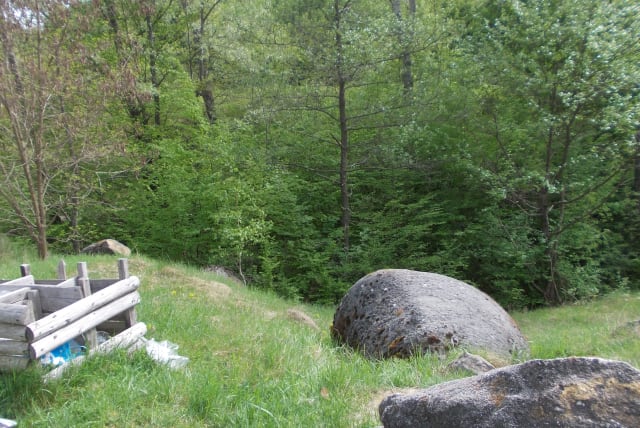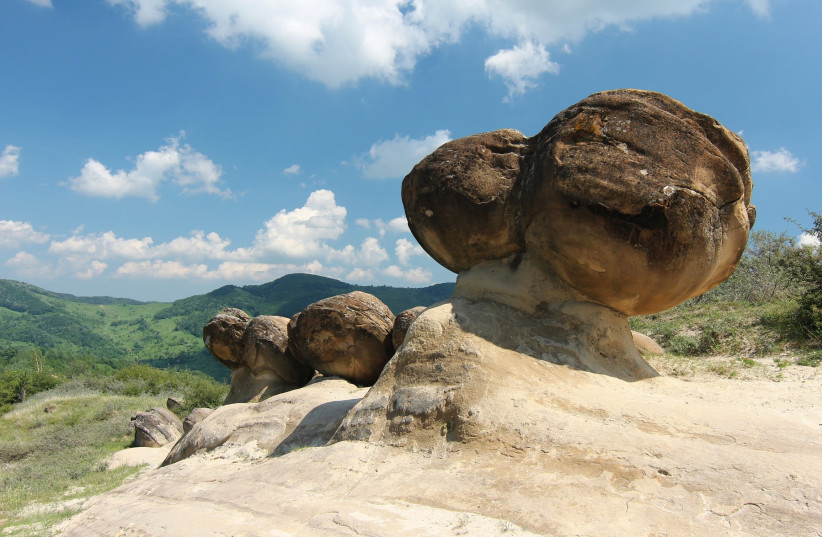These ‘living rocks’ in Romania are able to grow and even move

The “living rocks” are native to Costesti, a small town north of Bucharest and the home of extremely unique rocks that are hard to find elsewhere.
What is the first thing that comes to your mind about Romania? If your answer is not casinos, prostitution or chowder, you probably know that the Eastern European country is known for its wide variety of rocks.
The area known especially for its rocks is Costesti, a small town north of Bucharest and the home of extremely unique rocks that are hard to find elsewhere.
But these rocks are not only extraordinarily beautiful, they are also able to develop a "life of their own." They are able to grow and even move just like living creatures, which is how they got the nickname "living rocks." There are very few studies on these rocks, called trovants in Romanian, but they have attracted the attention of many geologists and tourists.
Scientists debate their origin, but most researchers believe that trovants are concretions (hard, compact masses formed by the precipitation of mineral cement within the spaces between particles) of sandstone with hard outer layers of sand, a bit like M&M's. These concretions are harder than the surrounding rock, so when the surrounding softer rock wears away, they emerge from the ground.
When it rains, the water creates a chemical reaction with the mineral content of the concretions, causing the material in them to flow out and as a result, the rock appears to expand. It may create large bubble-like growths that almost look like the rock is giving birth to a baby.
Geology requires patience
Of course, this is geology - all of these processes happen extremely slowly. It is estimated that the rocks "grow" by less than 5 centimeters in 1,200 years.
"Trovants are most often egg-shaped or ball-shaped, although they may appear in a large variety of shapes," Florin Stoican, co-director of the Buila-Vanturarita National Park, told Radio Romania International.
"Their history is quite simple - seven million years ago there was a [river] delta where today's stone quarry is located. This delta contained sediments, sandstone and claystone in particular, which were collected and transported from across the continent by a prehistoric river. Then, various mineral materials dissolved into solutions that circulated through this basin of gravel and sand. These minerals acted as cement and stuck together different sediment particles. Today there are trovants with diverse compositions. Some are made of sandstone, others of gravel. In geological terms - they are made of gravel and soil aggregate(a type of sedimentary rock consisting of rounded rock fragments joined together)," she explained.
Jerusalem Post Store
`; document.getElementById("linkPremium").innerHTML = cont; var divWithLink = document.getElementById("premium-link"); if (divWithLink !== null && divWithLink !== 'undefined') { divWithLink.style.border = "solid 1px #cb0f3e"; divWithLink.style.textAlign = "center"; divWithLink.style.marginBottom = "15px"; divWithLink.style.marginTop = "15px"; divWithLink.style.width = "100%"; divWithLink.style.backgroundColor = "#122952"; divWithLink.style.color = "#ffffff"; divWithLink.style.lineHeight = "1.5"; } } (function (v, i) { });

